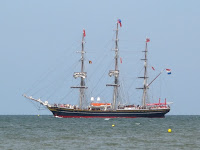 Sometimes we come across a place which appears to be a remnant of the Victorian era, and our first stop on the AA tour of Sussex, was exactly that: High Rocks is, just as the name suggests, 10m high rock outcrops that were left behind after the ice age. It was a popular Victorian excursion from Royal Tunbridge Wells on the new railway line. We loved it, and really felt we had stepped back in time; from the £2 entrance fee to the Victorian inscriptions on the rock faces.
Sometimes we come across a place which appears to be a remnant of the Victorian era, and our first stop on the AA tour of Sussex, was exactly that: High Rocks is, just as the name suggests, 10m high rock outcrops that were left behind after the ice age. It was a popular Victorian excursion from Royal Tunbridge Wells on the new railway line. We loved it, and really felt we had stepped back in time; from the £2 entrance fee to the Victorian inscriptions on the rock faces. The tour took us through Royal Tunbridge Wells, with it's attractive shopping street – The Pantiles, on to Scotney Castle. We last visited in 2001, and new since then was the opportunity to look at the 'new' castle, built in 1846. The house appeared much older, and was really worth a visit. The 'old' castle is definitely old, and is now the perfect garden backdrop behind the moat.
The tour took us through Royal Tunbridge Wells, with it's attractive shopping street – The Pantiles, on to Scotney Castle. We last visited in 2001, and new since then was the opportunity to look at the 'new' castle, built in 1846. The house appeared much older, and was really worth a visit. The 'old' castle is definitely old, and is now the perfect garden backdrop behind the moat.  Then through the very picturesque town of Goudhurst, a must visit, if in the area, to Sissinghurst Castle Gardens. Once again the old Tudor buildings, are a perfect background to the gardens. The gardens are more formal than Scotney, and full of roses.
Then through the very picturesque town of Goudhurst, a must visit, if in the area, to Sissinghurst Castle Gardens. Once again the old Tudor buildings, are a perfect background to the gardens. The gardens are more formal than Scotney, and full of roses. A drive through Cranbrook, a lovely town in Kent where Murray's forbears came from, took us to the highlight of the day – Great Dixter garden. This house was originally built in the mid 1400s in the dense forests of The Weald. Today it is set in stunning gardens, which are an absolute riot of colour. The house itself has been extended with a 'new' Edwardian wing. We were able to see the Great Hall, which is the largest surviving timber framed hall left in England.
A drive through Cranbrook, a lovely town in Kent where Murray's forbears came from, took us to the highlight of the day – Great Dixter garden. This house was originally built in the mid 1400s in the dense forests of The Weald. Today it is set in stunning gardens, which are an absolute riot of colour. The house itself has been extended with a 'new' Edwardian wing. We were able to see the Great Hall, which is the largest surviving timber framed hall left in England.  Both the house and garden are definitely worth a visit, and would rate as one of the most enjoyable visits we have made recently.
Both the house and garden are definitely worth a visit, and would rate as one of the most enjoyable visits we have made recently.As the heather was still flowering on the hillsides, we drove back over The Weald and decided to fit in a 7-mile walk based around Pooh Bridge, on our way home. The warm summer evening was a perfect time for the walk, which took us through
 Hundred Acre Wood, through the town of Hartfield and back to Pooh Bridge. Although not the original bridge that Christopher Robin played pooh sticks from, it is in the same place, and suitably strong for all the visitors who come from all round the world. By the time we reached there, all the tourists were long gone and we enjoyed a solitary game of pooh sticks.
Hundred Acre Wood, through the town of Hartfield and back to Pooh Bridge. Although not the original bridge that Christopher Robin played pooh sticks from, it is in the same place, and suitably strong for all the visitors who come from all round the world. By the time we reached there, all the tourists were long gone and we enjoyed a solitary game of pooh sticks. 












































